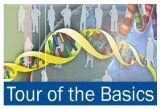 Life Science Space (July 6, 2008)--Adult cells of mice created from genetically reprogrammed cells--so-called induced pluripotent stem (IPS) stem cells--can be triggered via drug to enter an embryonic-stem-cell-like state, without the need for further genetic alteration.
Life Science Space (July 6, 2008)--Adult cells of mice created from genetically reprogrammed cells--so-called induced pluripotent stem (IPS) stem cells--can be triggered via drug to enter an embryonic-stem-cell-like state, without the need for further genetic alteration.The discovery, which promises to bring new efficiencies to embryonic stem cell research, is reported in Nature Biotechnology.
"This technical advancement will allow thousands of identical reprogrammed cells to be used in experiments," says Marius Wernig, one of the paper's two lead authors and a postdoctoral researcher in Whitehead Member Rudolf Jaenisch's lab.
"Using these cells could help define the milestones of how cells are reprogrammed and screen for drug-like molecules that replace the potentially cancer-causing viruses used for reprogramming," adds Christopher Lengner, the other lead author and also a postdoctoral researcher in the Jaenisch's lab.
In the current work, Wernig and Lengner made mice created in part from the embryonic-stem-cell-like cells known as IPS cells. The IPS cells were created by reprogramming adult skin cells using lentiviruses to randomly insert four genes (Oct4, Sox2, c-Myc and Klf4) into the cells' DNA. The IPS cells also were modified to switch on these four genes when a drug trigger, doxycycline, is added to the cells.
Wernig and Lengner then took cells from each IPS mouse and introduced the doxycycline trigger, thereby changing the adult mouse cells into IPS cells.
While earlier reprogramming experiments have typically induced pluripotency in adult skin cells, Wernig and Lengner were able to employ this novel method to successfully reprogram multiple cell and tissue types, including cells of the intestine, brain, muscle, kidney, adrenal gland, and bone marrow.
Importantly, the technique allows researchers to create large numbers of genetically identical IPS cells, because all cells in the mouse contain the same number of viral integrations in the same location within the genome. With previous approaches, each reprogrammed cell differed because the viruses used to insert the reprogramming genes could integrate anywhere in the cell's DNA with varying frequency.
Wernig and Lengner's method also increases the reprogramming efficiency from one in a thousand cells to one in twenty.
The large numbers of IPS cells that can be created by this method can aid experiments requiring millions of identical cells for reprogramming, such as large-scale chemical library screening assays.

Cells from mice created using genetically reprogrammed cells can be triggered via drug administration (doxycycline) to enter an embryonic-stem-cell-like state without the need for further direct genetic manipulation. (Image credit: Tom DiCesare/Whitehead)
"In experiments, the technique will eliminate many of the reprogramming process's unpredictable variables and simplify enormously the research on the reprogramming mechanism and the screening for virus replacements," says Jaenisch, who is also a professor of biology at Massachusetts Institute of Technology.
The research was supported by the Human Frontiers Science Organization Program, the Ellison Medical Foundation, the Ruth L. Kirschstein National Research Service Award, and the National Institutes of Health.
--------------------------------------------------------------------
Journal reference:
Marius Wernig, Christopher J Lengner, Jacob Hanna, Michael Lodato, Eveline Steine, Ruth Foreman, Judith Staerk, Styliani Markoulaki, and Rudolf Jaenisch. A novel drug-inducible transgenic system for direct reprogramming of multiple somatic cell types. Nature Biotechnology, July 1, 2008
:: New technique produces genetically identical stem cells
http://www.wi.mit.edu/news/archives/2008/rj_0701.html
.jpg)
.jpg)
.jpg)

.jpg)
.jpg)
No comments:
Post a Comment